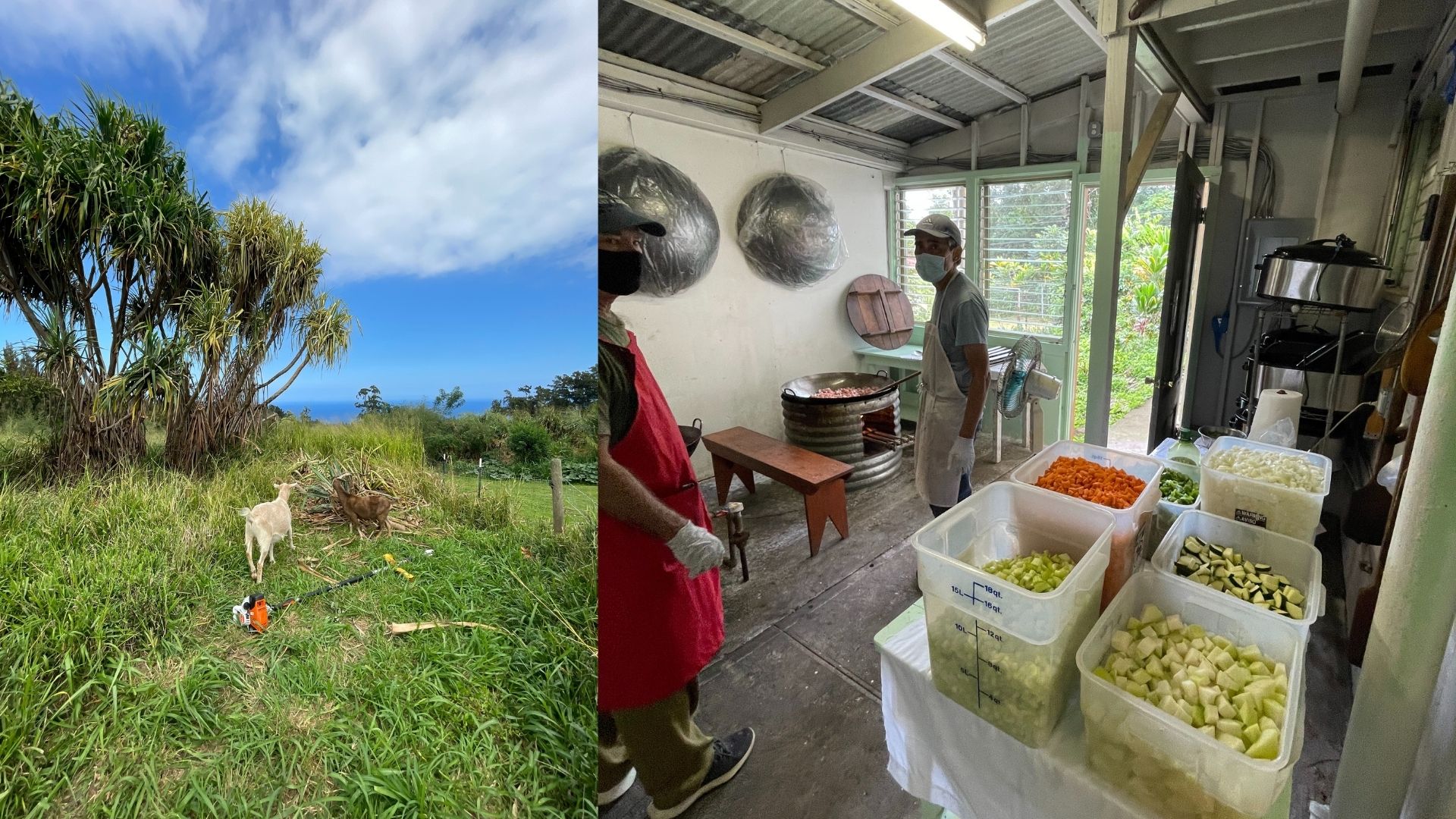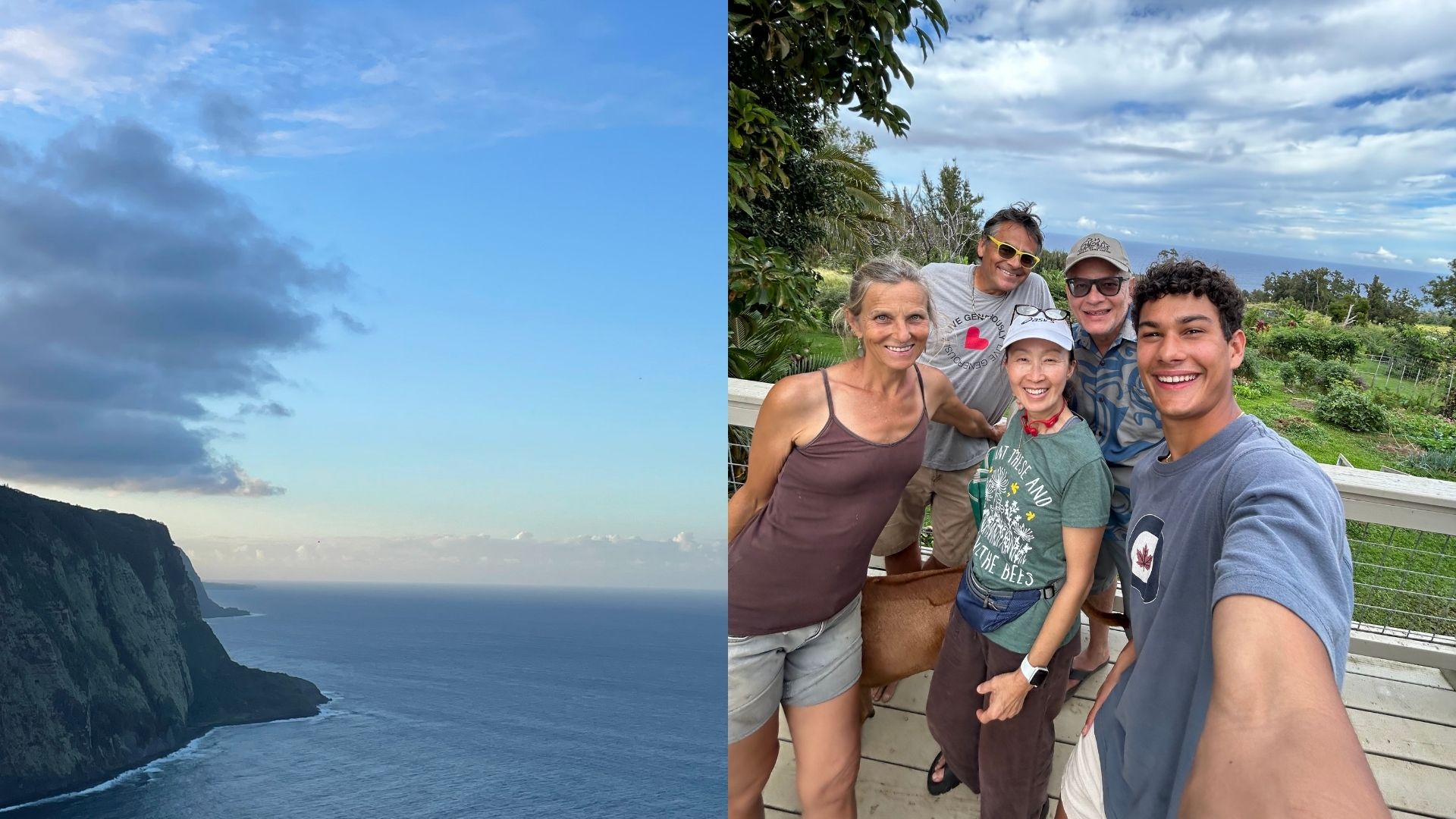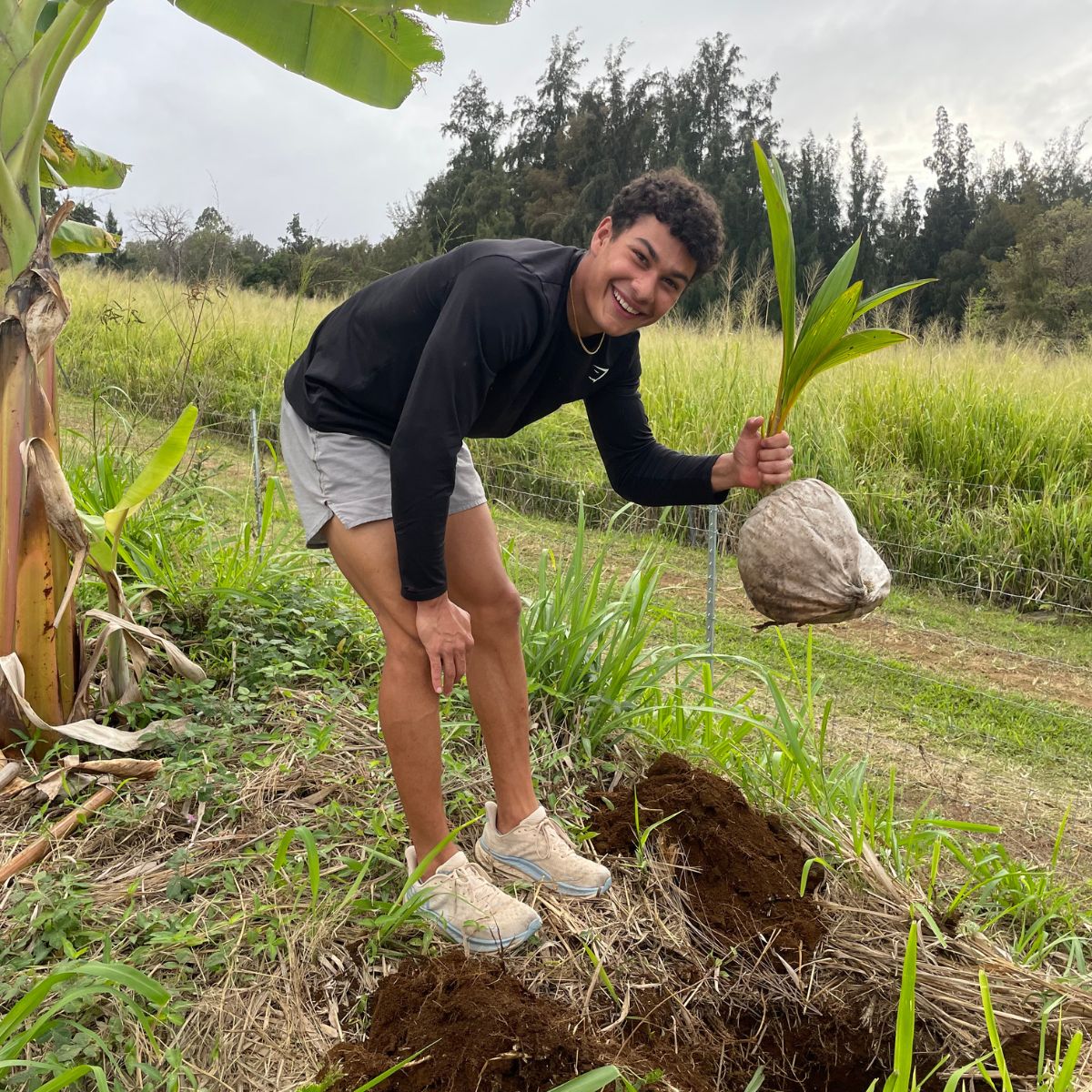This past January, I had the privilege of spending two weeks as a volunteer on the Hamakua Coast of the Big Island of Hawai‘i, an opportunity made possible by the Ray C. Anderson Center for Sustainable Business at the Georgia Tech Scheller College of Business. Through Worldwide Opportunities on Organic Farms (WWOOF), I was connected with a couple, Katie and Tiger, who live full time on the island and operate a small, regenerative organic farm.
WWOOF facilitates cultural and educational exchange by linking volunteers with organic farmers in over 130 countries. It promotes hands-on learning in ecological agriculture and fosters an international community centered on sustainability and shared values of environmental stewardship. Rather than choosing an international location, I opted to stay in the country – albeit in a location that is very different from my home of Atlanta! I discovered that Hawaii offers a complex case study at the intersection of agriculture, sustainability, and economic systems in the United States.
My time on the farm provided insight into the daily realities of regenerative agriculture. It also revealed deeper structural issues relating to Hawaii’s heavy dependence on imports and the subsequent implications on the disruption of local agriculture. What began as a spontaneous volunteer experience evolved into a firsthand lesson on the effects of an import-heavy economy on local communities and the broader agricultural system within the state.
Organic Farming Leads to a Broadened Perspective
Each morning on the farm began with a cup of coffee, a quick breakfast, and time to journal or read before starting the day. The mornings usually began with the same tasks: feeding the chickens and collecting eggs, harvesting fruits and vegetables, letting the dog Enzo stretch his legs by racing up and down farm’s hills, and (my favorite) visiting the goats − Sam, Tag, and Honey.
Following the morning routine, we performed regular tasks that keep the farm operational. We also focused on special projects: clearing plots of land overrun with invasive grasses that deplete the nutrient-rich soil; maintaining banana trees that grow like wildfire; and planting crops like tomatoes, coconuts, and dragon fruit; and using plant waste, such as fallen banana leaves, to fuel the next plot of farmland. We didn’t waste any bit of organic material that came from the farmland. This practice speaks to the family’s extensive knowledge and respect for the land – which is sacred to many of the island natives as well as to newcomers (like me) who become enamored of the island’s natural wonders.

As the days went by, I grew closer and closer to my hosts, Katie and Tiger, sharing as much about my personal life with them as I have with my closest friends back home. While many conversations gave me the opportunity to learn about life from two well-travelled individuals, some were focused more on the history of the island and how foreign human influence impacted this land forever. The dinner table is where I first learned of the harm that U.S. influence had on the local agricultural economy of Hawaii and the ultimate migration of its people away from their homeland.
Beyond the farm, my exploration of the island with my host family revealed the same themes that our mealtime conversations held. Beautiful small towns, once rich in farmland and thriving with trade, have given way to communities that rely mainly on fast-food restaurants and gas stations for daily nutrition. By car and by foot, the three of us travelled a significant portion of the northern region of the Big Island, and each day trip revealed something new. Long car rides to Hawi and long runs to Kalopa State Park turned into lessons about the depletion of sustainable agriculture-based communities and the influence of the supply chain on the economy of Hawaii.
While exploring the island, I had time to ask questions and reflect on how a culture so rich could disappear so quickly. I learned, for example, how produce at small, road-side farm stands often goes bad since farmers can’t match the prices of large grocery store chains. Katie and Tiger shared their personal frustrations about the high cost of shipping tools, fertilizers, and farm equipment to the island, and the lack of local infrastructure to support small farms. Selling produce locally comes with obstacles. Imported foods sold in grocery stores are significantly cheaper, despite the environmental cost of transporting them from thousands of miles away. The system creates an unsustainable chokehold on price-conscious consumers. Small farmers simply cannot compete with the economies of scale of larger shipping companies.
Interwoven Threads: Sustainability and Community
As I spent more time on the island, I had the opportunity to engage with the local community in meaningful ways, including volunteering at the Hongwanji Buddhist temple, where I helped prepare meals for native families in Honoka‘a, a nearby town. It became increasingly evident that the challenges faced by small-scale farmers in Hawaii go beyond mere economics; they’re rooted in the fabric of the communities themselves. Towns like Honoka‘a still have a strong presence of Native Hawaiian families, but the people volunteering at the temple − kind, community-driven people − were mostly residents who had moved to the island from the U.S. mainland.

I see evidence of hope in towns like Honoka‘a where many people come to Hawaii seeking to support revitalization efforts and rebuild community. I saw how foreign influence at the local level can be a positive agent of change when it is rooted in service and respect. However, at the state level, foreign control − especially in the form of monopolized industries such as shipping − often works against the same communities it claims to serve.
Large shipping companies, such as Matson and Young Brothers, dominate the landscape, controlling much of the island’s supply chain and consequently eliminating the viability of revitalizing local agricultural infrastructure in Hawaii. With around 85% of the state’s food brought in from elsewhere, local farmers are left trying to compete with low-cost alternatives shipped from thousands of miles away. And the reality is, they can’t. Prices that local farmers can offer are far too high for consumers to justify. Instead of buying fresh, locally grown produce, low-income families turn to low-cost alternatives (like fast food) for their daily meals. Shipping companies’ dominance over the food and agriculture markets in Hawaii is not only making farming economically unsustainable but also gradually threatening the health and well-being of many native Hawaiians who can no longer afford quality food.
Sustainability isn’t just about cutting emissions or minimizing waste. It also means protecting the cultural and social systems that keep communities intact. My time on the farm taught me a path forward. Everything had a role, nothing went to waste. We returned nutrients to the soil, shared what we harvested, and supported communities. Without meaningful investment in local agriculture through infrastructure, policy, and community support, Hawaii stands to lose more than its ability to grow food internally; it risks losing its culture, history, and community.
About the Author: Theodore “Teddy” Suazo is a rising fourth-year business administration major with a concentration in finance. Teddy would like to thank the Ray C. Anderson Center for Sustainable Business for investing in his future by allowing him to experience and learn about a beautiful island. He also extends his heartfelt gratitude to Katie and Tiger, his wonderful WWOOF host family.
Learn More: Giving to Scheller
Supporting Students: Philanthropic support for small grants (like the one Teddy Suazo received) makes it possible for Georgia Tech to recruit the brightest, most talented students from around our state and around the world. Support students today.
